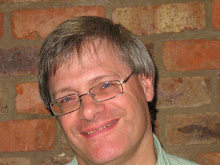The river Rhone leaves the lake at this point, and we walked across the Pont du Mont Blanc, from which the mountain peak can be seen on a clear day. We might have crossed under the bridge and continued on the promenade crossing on the next bridge. This route is lit up at night by a string of lights on the hotel fronts. This second bridge, the Pont du Berries, has access to the Isle de Roussau an area of seating and decking we will explore next time we visit.
Across the Pont du Mont Blanc, toward the west, is the tourist information office, and the Gare de Routiere, where we caught the bus to Annecy. Further still, not anywhere we walked to, is the railway station, Gare de Cornavin, and beyond that the airport. The promenade continues past Paquis, which is where there is a jetty leading to a lighthouse, opposite the Jet D'eau. Part way along, are baths in the lake, with changing rooms, lifeguard and a café. There was no-one swimming early evening when we were there in April, but plenty of folk at the cafe or sunbathing on the jetty.
Further along to the north are the botanical gardens, which we loved. There is a great variety of plants, well labelled, some animals, and a café up a slight hill, affording a good view of the lake. We enjoyed our beer and fruit tart sitting outside the café in the sunshine. Behind the gardens are the United Nations building, and park, which we did not visit.
Up the hill behind the Jardin Anglais is the old town and St Peters cathedral. Before the hill are two roads, Rue de Rhone and Rue de Rive on which all the trams run between Bel-air, by the Rhone, and Rive and Place de Eaux-vives, which is where the more residential area begins. Here there are shops, some affordable most not, and banks, and squares and cafés. As we walked up the hill to the old town, we chose some good roads but missed other sights, including the Morlard tower, which we will have to climb next time.
The centre of the old town is the Place du Bourg de Four, perfect for sitting outside the cafés and drinking tea. We were pleased to find a café that served both both Assam and Darjeeling tea, and also had a view of the Jet D'eau. Next to the square, but a little higher is the Cathedral, with good views over the city and lake from the towers, the archaeological museum, and the museum of the reformation. Next to the square on the other side, across a footbridge high over the main road below is the Museum of Art & History.
Around the Cathedral in other directions are various streets with interesting corners shops churches and cafés, all worth exploring, although some streets were quite steep. We made our way down to the Rue de Corraterie, where we enjoyed cake and coffee at one of the cafés there.
Further South from the old town is the Place du Neuve, Plainpalais, and Carouges. We visited Plainpalais first, a big diamond shaped square which housed a market, a circus and a funfare. The day we were there the market was more bric-a-brac than antique. We walked down some streets and found a bookshop, called 'au Chien Bleu' with many children's books, which was impressively busy. We also saw a memorial to the French residents and Swiss volunteers who died in World War One.
This took us to the Parc de Bastion, which we walked through past the Reformation Wall. This monument has ten oversize statues of important figures in the reformation. We walked past a grand conservatory style café, and the corner with about ten large open air chess boards, to arrive at the Place du Neuve, which has the opera house on the other side. after a cake and coffee at the café de Corraterie, we took a tram out to Carouges.
Carouges is further south, across the river L'Arve, a tributary of the Rhone. It was settled by Italians from Savoy, and has a more Mediterranean feel. We got the tram to the Place de Rondeau, and retraced the route along Rue D' anciennes, enjoying the squares, the quirky shops, and the general atmosphere. This was our first day, and we loved the relaxed atmosphere after the busyness of the travelling to the hotel from the airport.



















